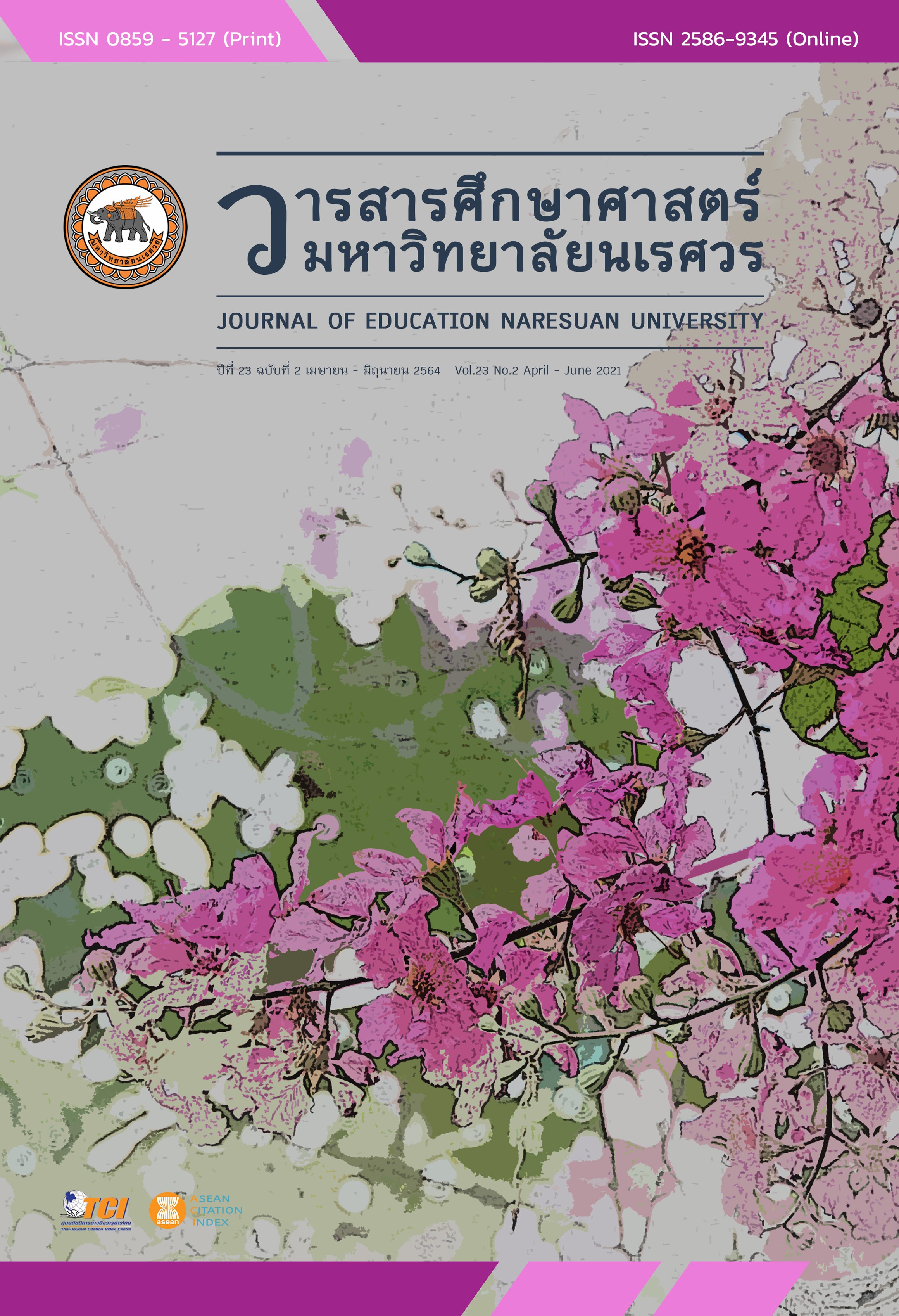THE DEVELOPMENT OF A DRAWING AND COLORING APPLICATION BY AUGMENTED REALITY TECHNOLOGY BASED ON THE CONCEPTS OF MULTISENSORY การพัฒนาแอปพลิเคชันวาดภาพระบายสีด้วยเทคโนโลยีออคเมนเต็ดเรียลลิตี้ตามแนวคิดพหุสัมผัส
Main Article Content
Abstract
This research included three objectives; 1) to study the components of a drawing and coloring application by augmented reality technology based on the concepts of multisensory, 2) to construct a drawing and coloring application, and 3) to study the satisfaction of towards using the application. This application was validated by six experts. An accidental sampling experimental research design was applied to 20 primary students. The research instruments consisted of the constructed application and the application evaluation form. The data were analyzed by mean and standard deviation. The research finding were as follows; the application components consisted of 1) Application Module, 2) Marker Module, and 3) 3D Module. The result of evaluating the suitability of the application by design experts indicated among others that: 1) The design (= 4.67, S.D. = 0.48), 2) performance (
= 4.74, S.D. = 0.45), and 3) the characteristics of the concepts of multisensory (
= 4.52, S.D. = 0.50) were the highest level in all aspects. Most students feel happy, fun and enjoyable with the drawing and coloring application. They gained new recognition experience with coloring activities.
Article Details
The owner of the article does not copy or violate any of its copyright. If any copyright infringement occurs or prosecution, in any case, the Editorial Board is not involved in all the rights to the owner of the article to be performed.
References
Clark, A., Duenser, A., & Grasset, R. (2012). An interactive augmented reality coloring book. 2012 IEEE Symposium on 3D User Interfaces (3DUI), 7-10.
Chutabhakdikul, N. (2015). Multisensory learning. Encyclopedia of Education, 50, 62-68. [in Thai]
Kesim, M., & Ozarslan, Y. (2012). Augmented reality in education: Current technologies and the potential for education. Procedia - Social and Behavioral Sciences, 47, 297–302.
Meesuwan, W. (2018). Educational technology research. Phitsanulok: Naresuan University Press. [in Thai]
Royal Society of Thailand. (2019). Computer terminology. Retrieved from http://www.royin.go.th/ [in Thai]
Tangcharoen, W. (1993). Art education. Bangkok: Odeon Store. [in Thai]
Thamrongsotthisakul, S. (2017). Development of a reading instructional model based on the concepts of brain-based learning and multisensory for students with reading disabilities in primary school. College of Asian Scholars Journal, 7(Special Issue), 49-64. [in Thai]
Udomdeit, C., Chumnankit, P., & Gumjudpai, S. (2016). Development of experience management based on multi-sensory approach to improve basic scientific process skills and self-confidence of first-year kindergartners. Journal of the Academic Curriculum and Instruction, Sakon Nakhon Rajabhat University, 8(21), 23-33. [in Thai]
Wannatong, K., Bunterm, T., & Wannanon, P. (2013). Science achievement, cognitive function and creative innovation of students learning with neuroscience - based multi-sensory media associated with traditional approach. North-Eastern Thai Journal of Neuroscience, 8(2), 56-69. [in Thai]
Zünd, F., et al. (2015). Augmented Creativity: Bridging the real and virtual worlds to enhance creative play. In SIGGRAPH Asia 2015 Symposium on Mobile Graphics and Interactive. Kobe: Japan. DOI:10.1145/2818427.2818460


